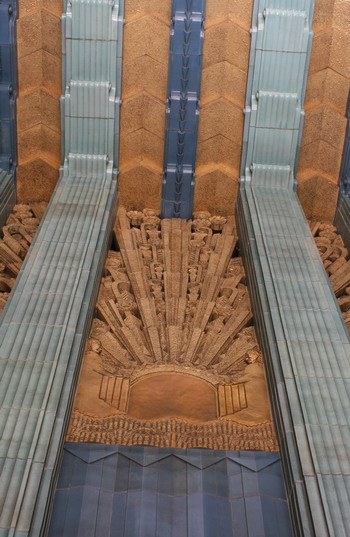The former “Real” Downtown, today known as the Historic Core, starts at Hill street and stretches to the South. What was once (before WW II) the center of the city with company headquarters, banks, department stores, theaters, cinemas, apartment buildings, restaurants and bars, started to change in the ’50s. People packed up and moved to the suburbs, because life out there was cheaper, with more room for the kids in the backyard. The financial institutions all moved across Hill Street. Even though that was just a few blocks away, the impact was massive. Company headquarters too, moved to pastures new and cheaper in the outlying areas. The department stores, already on a shaky footing, lost more customers, because those now shopped in the suburbs. Theaters and cinemas, likewise losing their clientèle, changed their programs to entertainment not quite on the same level as during their heydays, they became grind houses . More people left to live in paradise (aka “the ‘burbs”) and the demographics changed – Latinos started to move downtown, taking over the emptying apartment buildings, the theaters and the cinemas, turning Downtown into the hopping center of Latino entertainment. Which prompted the last few Anglos to flee.
The downward spiral moved faster and faster. Buildings started to crumble. Prostitution, drug dealing, street gangs became a huge problem. The Homeless lived on the streets. All this more or less killed all traditional commercial activities, which again drove everybody away who could afford it. The riots of 1992 spread all over the city; one of the centers of unrest was Parker Center, the LAPD headquarters downtown. The Northridge Earthquake of 1994 started another wave of flight from the city. By 1999 the official number of people still living in Downtown was 18,000, most of them Latinos and low-income. But those by then had created their own environment, with small shops and stores, very lively and bustling with people who called the area their home.
At that point City Hall moved. It created the Adaptive Re-Use Ordinance, which was again overhauled in 2003 and which started a complete change in the Historic Core by, basically, giving the area over to market forces, while hoping for the best.
The gamble paid off – in part, for some at least.
One has to explain what the Adaptive Re-Use Ordinance is: it is a carte blanche for developers to convert any existing structures in the Historic Core into living quarters and commercial space. Which is exactly what happened – suddenly more and more and more of the crumbling buildings were and are being restored to their former glory outside, and into fabulous apartments and lofts inside. Part of the Ordinance was that a certain percentage of the newly created living spaces were supposed to be affordable for low-income families.
An example – and one of the best ones – is the Eastern Columbia Building, a former clothing and furniture store built in 1930.

It has been restored impeccably with spectacular apartments inside and a roof garden with pool. The design above the front doors alone is breathtakingly beautiful.

Low-income renters however will hardly ever pass through those doors, says the cynic in me. Rumor has it that the provisions in the Ordinance governing this part can be handled quite “creatively.”
And there you have it – the Historic core is changing again. A new cycle is beginning, with those people formerly too poor to live in better areas being driven out yet again because they can not afford to stay downtown.
Which leaves me with the question – where will they go now?